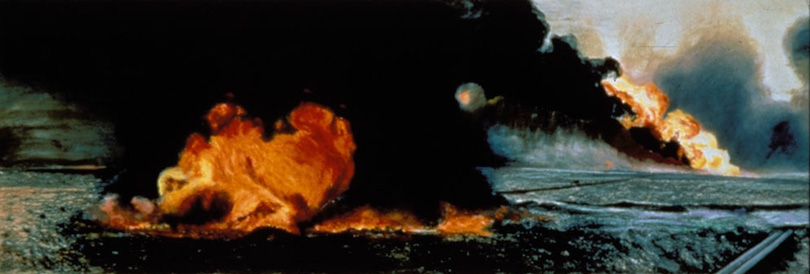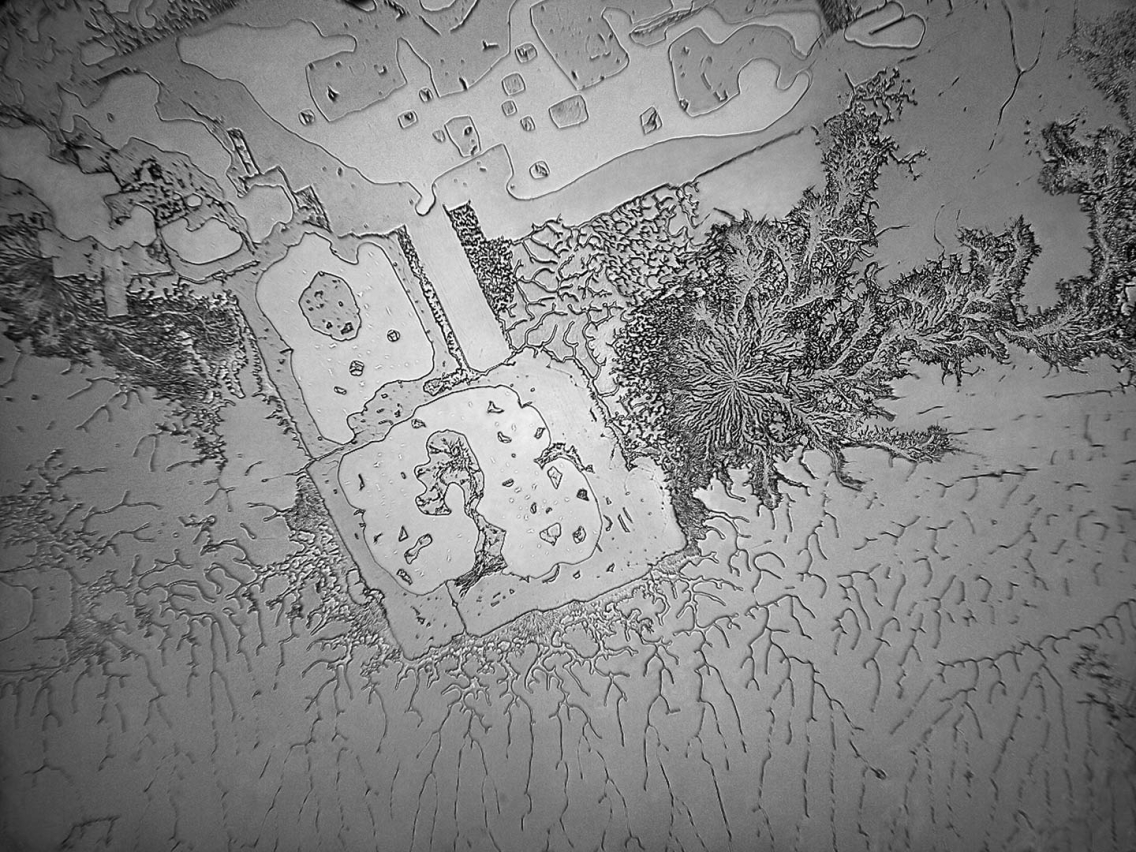An Invitation to Awe
–
In his 1757 treatise, A Philosophical Enquiry into the Origin of Our Ideas of the Sublime and Beautiful, Edmund Burke seeks to separate the beautiful from the sublime. He argues that experiences of the sublime are laced with terror, obscurity, and darkness—even pain. These descriptions echo some of the oldest definitions of awe, which include references to fear, dread, and reverential respect. In both cases, human beings are cast as tiny and insignificant in the face of vast and powerful forces.

This fall, the Middlebury College Museum of Art will host An Invitation to Awe. At the core of the exhibit are questions about where and how awe is most readily experienced. Older paintings and prints will be displayed in conversation with contemporary objects, scientific equipment, and interactive works that compel the viewer to think of how awe is experienced through senses other than sight.

Do contemporary encounters with awe differ from historical notions of the sublime? Most people today tend to think of awe in positive terms (using words like “awesome” or “awe-inspiring”) but the challenges of our current moment suggest the adoption of a broader and more nuanced understanding of awe. For visitors to the exhibit, this includes a consideration of how awe may accompany moments of devastation as well as acts of tremendous human courage and resilience, how awe characterizes encounters with the monumental and with the microscopic, and how curiosity and wonder intersect with our perception of awe.

An Invitation to Awe is organized by studios in which visitors will encounter objects that share a common awe-related theme. In the Studio of the Tiny and Invisible, for example, a late 19th-century image of snowflakes made by Wilson Bentley is displayed in conversation with very recent photomicrographs of tears made by American artist Rose-Lynn Fisher and glass sculptures of viruses made by British sculptor Luke Jerram. In the Studio of Scientific Discovery, an 18th-century print made by William Pether after Joseph Wright of Derby sits adjacent to 19th-century lantern slides used in bygone Middlebury classrooms.

Occupying a studio all its own is Dario Robleto’s 2024 video installation, Ancient Beacons Long for Notice. At heart, the film explores the 1977 decision by NASA to send the Golden Record into space, bolted to the sides of Voyager 1 and 2, space probes that are now more than 15 million miles from earth. The Golden Record contains within its grooves a selection of sounds, languages, music, and images that attempt to convey the complexity of all of earth’s life forms. The film poses deep questions about what it means to tell the story of the earth, particularly when the charge to the team creating it was to “put our best face forward,” excluding any mention of war, famine, decay or environmental degradation.
Contemporary awe researchers Dacher Keltner and Jonathan Haidt argue that awe is located in moments of “vastness that require accommodation.” Vastness describes an experience of such magnitude that something in us must shift (accommodate) to make room for this event and its attendant emotions. An Invitation to Awe seeks not to define, but to provoke, and to offer viewers the opportunity to expand their own understanding of where awe lives now.

Screening Schedule for Dario Robleto’s Ancient Beacons Long for Notice:
Tuesday–Friday
10:15am
11:30am
12:45pm
2:00pm
3:15pm
Saturday and Sunday
12:30pm
1:45pm
3:00pm

Related Events
Opening Reception: An Invitation to Awe
Friday, September 13, 2024 | 5:30–7:30 PM
Mahaney Arts Center Lower Lobby, Dance Theater, and Museum galleries
After several years in the works, the Museum is excited to present An Invitation to Awe, curated by Associate Professor of the History of Art and Architecture Katy Smith Abbott in collaboration with her students and colleagues. In this exhibition, older paintings and prints are displayed in conversation with contemporary objects, scientific equipment, and interactive work that compels the viewer to think of how awe is experienced through senses other than sight and to expand their own understanding of where awe lives now. Professor Smith-Abbott will give a talk about the making of the exhibition at 5:30pm, followed by hors d’oeuvres and drinks (cash bar) at 6pm.
Ancient Beacons Long for Notice: A Conversation with Dario Robleto
Tuesday, October 15, 2024 | 4:30–6:00 PM ET
Mahaney Arts Center, Robison Concert Hall
In his prints, sculptures, and films, multi-disciplinary artist Dario Robleto incorporates a deep fascination with science, history, sound, medicine, and human empathy. His 2024 film, Ancient Beacons Long for Notice, is currently installed at the Middlebury College Museum of Art as part of the exhibit, An Invitation to Awe. He will join Guest Curator Katy Smith Abbott in conversation, as they explore Robleto’s conviction that “awe is a courtship with the unknown.”
Museum Lecture + Lunch Series: Artist Rose-Lynn Fisher
Friday, November 1, 2024 | 12:30–2:00 PM
Mahaney Arts Center, Room 221 and Lower Lobby
Join us for a talk by Rose-Lynn Fisher, an artist featured in the exhibition An Invitation to Awe, who uses microscope, camera, and mixed media to explore the realms within realms we inhabit, in work that evokes a continuum of interconnections and wonder. Afterward, stay for conversation over a light lunch in the MAC Lower Lobby. Cosponsored by the Department of History of Art and Architecture.
This event is free and open to all, but $5 donations are welcome.

An Invitation to Awe is curated by Associate Professor of History of Art and Architecture Katy Smith Abbott in collaboration with students and colleagues from across campus. At Middlebury, the exhibit is supported by the Christian A. Johnson Memorial Fund and a gift from the Middlebury Museum and Visual Arts Council.
